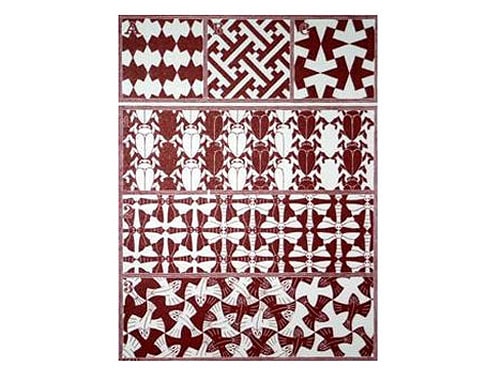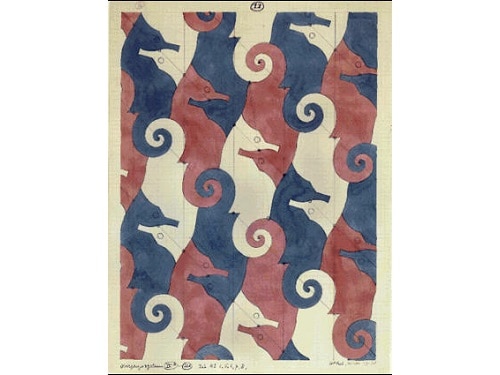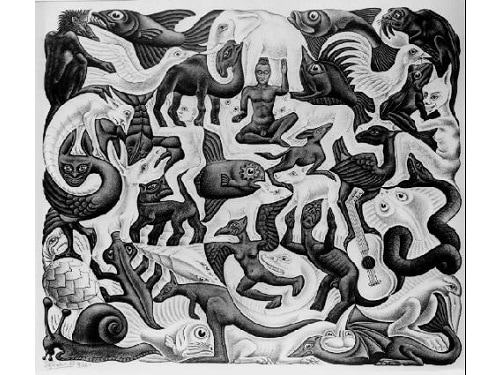JOURNEY TO INFINITY: ESCHER’S WORLD OF WONDER
The crucial turning point in M. C. Escher's artistic development was his second trip to southern Spain in 1936. There, he visited famous Moorish architectural landmarks such as the Alhambra Palace in Granada and the Mezquita in Cordoba. These visits inspired him to methodically study the patterns the artisans of the 14th century used to decorate the walls and the arches of the Moorish monuments.
He then became passionate about tessellations: geometric decoration, where triangles, stars or squares repeat like tiles to cover a plane without leaving any gaps. He meticulously produced over 100 watercolours showing different motifs of tessellation in an exercise book. These motifs represented 17 different ways of filling a flat surface with regular patterns and his study of various colouring possibilities.

M.C. Escher
Regular Division of the Plane II
1957
Woodcut
The Liberty Collection, USA
In this tessellation work, M.C. Escher got his inspiration from the Alhambra Palace’s patterns, as well as from a Japanese illustration (in the middle of the top row). He then transformed the usual geometric Islamic patterns into figurative shapes to represent insects and birds.


M.C. Escher
Regular Division of the Plane with Seahorses, no. 11
1937-1938
Water Color
The Liberty Collection, USA
This sea horses pattern is part of M.C. Escher’s symmetrical drawings. From these drawings, he developed a mathematical approach to the representations of symmetry and in 1937 created woodcuts based on them.

M.C. Escher
Plane Filling II
1957
Lithograph
The Liberty Collection, USA
In most of tessellation works, the shapes are geometrical and repeated in the same size several times. In this remarkable work, M.C. Escher represented more than 40 different figures embedded into each other creating a unique effect.

